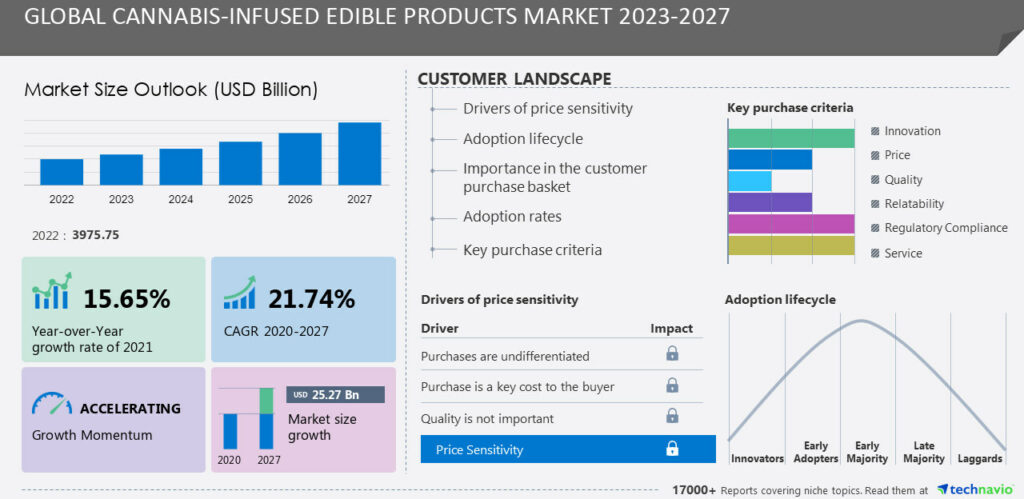Cannabis edibles have come a long way from the days when someone making cannabis-infused brownies was considered to be a rarity for most consumers and patients. These days, cannabis consumers in legal markets often have a buffet of cannabis edible products from which to choose from when making their purchases at dispensaries.
In states like Oregon in the U.S., cannabis consumers can purchase cannabis infused gummies, lollipops, cotton candy, hot sauce, cookies, brownies, ice cream, and even pop rocks. Essentially, if someone has a favorite type of food or snack, there is likely a cannabis-infused version of it on a dispensary shelf, in a fridge, or in freezer somewhere.
Many cannabis consumers and patients prefer cannabis edibles for various reasons, including that edibles are a smokeless form of consumption. Cannabis edibles are often also a more discrete type of consumption and do not require a device or flame.
A recent market analysis was conducted by Technavio, which found that, “The global cannabis-infused edible products market size is estimated to grow by USD 25.27 billion from 2023-2027.”
“The market is estimated to grow at a CAGR of almost 21.74% during the forecast period. The global cannabis-infused edibles market is expanding due to shifting perceptions and lucrative opportunities.” Technavio stated in a press release.

“The market’s value is projected to reach new heights, with key contributors being North America and Europe. Regulatory frameworks, consumer demographics, and distribution channels are crucial factors shaping the market dynamics.” Technavio stated.
“Moreover, the market is witnessing a shift towards functional and health-conscious edibles, as consumers seek alternatives to traditional cannabis consumption methods. The use of advanced technologies, such as nanotechnology and microencapsulation, is enabling the development of more effective and discreet delivery systems.” Technavio also stated.
“In summary, the Global Cannabis-infused Edible Products Market is a dynamic and evolving industry, driven by consumer preferences, regulatory frameworks, and technological advancements.” Technavio concluded.

